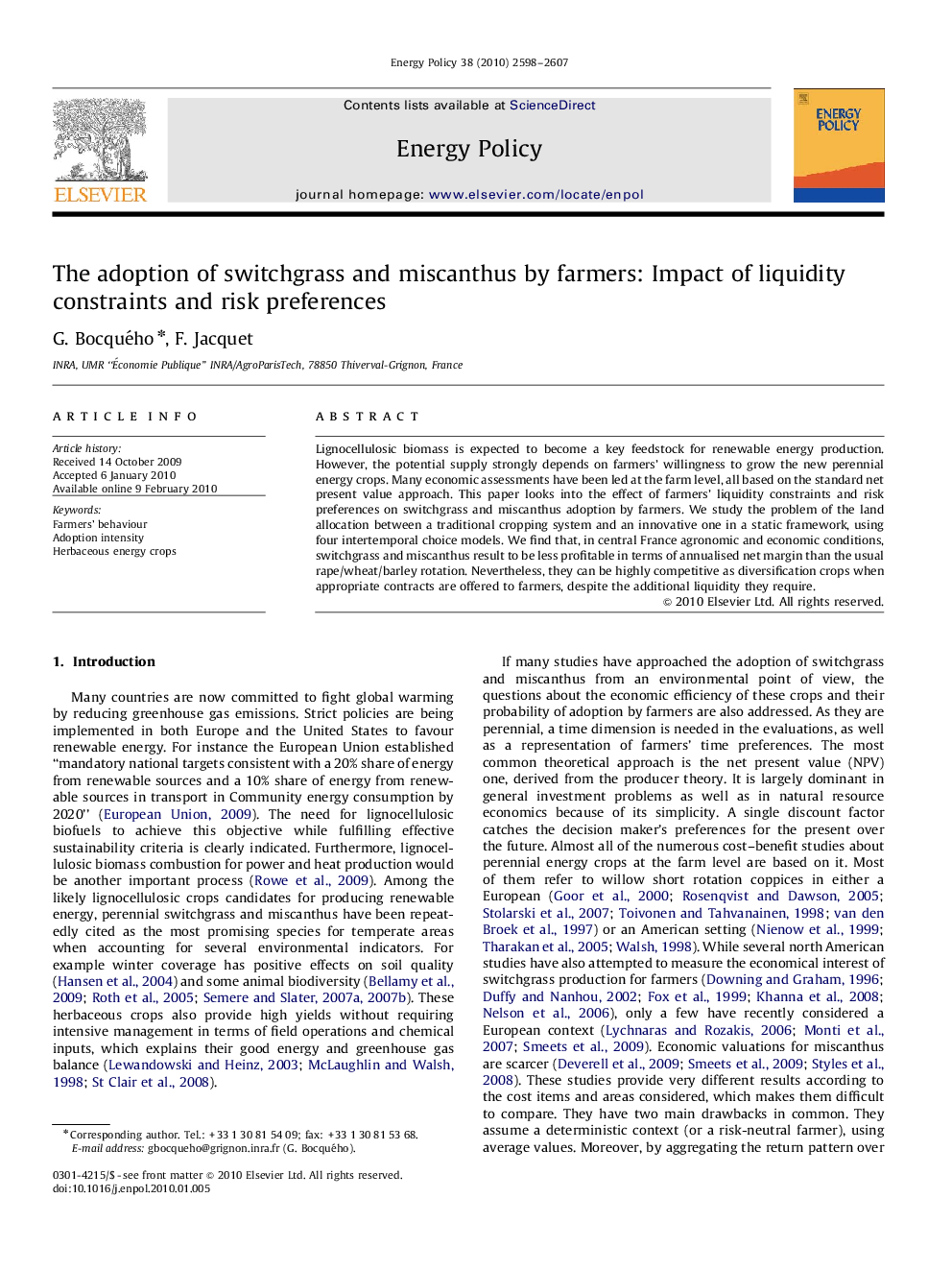| Article ID | Journal | Published Year | Pages | File Type |
|---|---|---|---|---|
| 995059 | Energy Policy | 2010 | 10 Pages |
Lignocellulosic biomass is expected to become a key feedstock for renewable energy production. However, the potential supply strongly depends on farmers’ willingness to grow the new perennial energy crops. Many economic assessments have been led at the farm level, all based on the standard net present value approach. This paper looks into the effect of farmers’ liquidity constraints and risk preferences on switchgrass and miscanthus adoption by farmers. We study the problem of the land allocation between a traditional cropping system and an innovative one in a static framework, using four intertemporal choice models. We find that, in central France agronomic and economic conditions, switchgrass and miscanthus result to be less profitable in terms of annualised net margin than the usual rape/wheat/barley rotation. Nevertheless, they can be highly competitive as diversification crops when appropriate contracts are offered to farmers, despite the additional liquidity they require.
